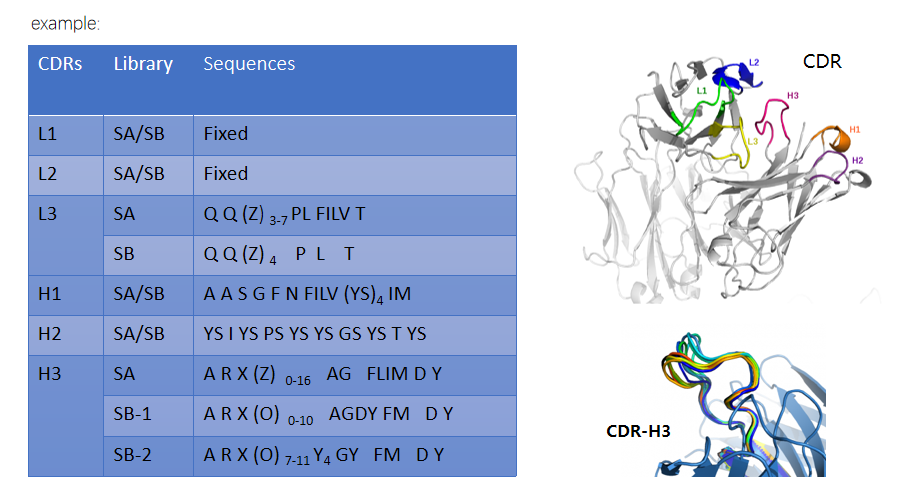Cases
The Construction of a "Three-hundred-billion Diversity" Antibody Library (AI-Assisted Design)
Background:
The nature fully human antibody library constructed using phage display technology has an inherent disadvantage of low diversity (107 ~ 108), which reduces the success rate of antibody screening. The emergence of fully synthetic library technology overcomes this limitation by utilizing existing antibodies as templates for high-throughput mutagenesis in complementarity-determining regions (CDRs) of the antibody, resulting in a mutant Fab/scFv/VHH phage small library with a diversity of up to 10E10. The "three-hundred-billion diversity" antibody library developed by ABLINK contains multiple fully synthetic antibody libraries, each of which includes twenty to eighty small libraries.
Process:
Fully Synthetic Humanized Fab Antibody Library
1. Select well-expressed antibodies with high affinity as templates.
2. Synthesize the pelB-VL-CH1 and pelB-VH-CH1 DNA tandemly and clone them into the phage.
3. Use Kunkel method to perform high-throughput mutagenesis on CDR regions of VL and VH to construct a mutant Fab DNA library.
4. Transfect the DNA library into super-competent cells (containing helper phages) to construct a mutant Fab phage sub-library.
5. Mix multiple sub-libraries to form a fully synthetic humanized Fab antibody library.
Fully Synthetic Human scFv Antibody Library
1. PCR amplify human antibody germ-line genes DP47H, DPK22, and DPL11 and clone them into a common vector.
2. Use IUB code degenerate primers to PCR mutate the CDR regions, and constructs DP47H-linker-DPK22 and DP47H-linker-DPL11 scFv using overlap PCR, which is cloned into the phage to construct a mutant scFv DNA library.
3. Transfect the DNA library into super-competent cells (containing helper phages) to construct a mutant scFv phage sub-library.
4. Mix multiple sub-libraries to form a fully synthetic human scFv antibody library.

Service features and advantages:
1. Optimized mutation methods, optimized electrotransformation conditions, and modification of competent cells result in multi-point 100% mutation efficiency and the ability to achieve the number of clones to 10E11 in single electrotransformation.
2. Rich experience in mutation primer design and AI assistance leads to improved efficiency.
